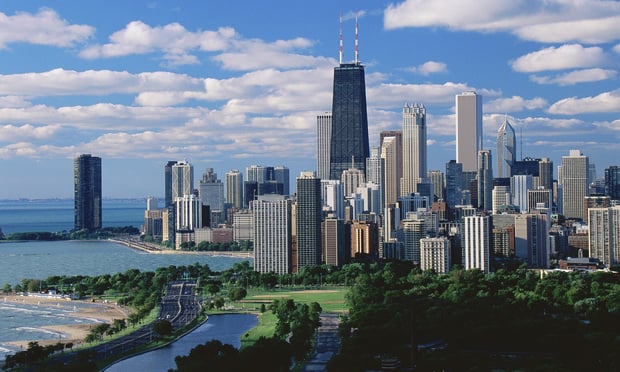"It's a continuation of the first quarter in the sense that we're not seeing any recovery in the market," Jeff Liljeberg, a JLL managing director, tells GlobeSt.com. "In fact, we're seeing deterioration, particularly as it relates to more subleases flooding the market, which brings the entire market down. I don't see any bottoming out in the near term."
CB Richard Ellis' Q2 report notes that while sublease space is indeed on the rise, it has yet to reach the peaks seen in some previous recessions. Sublease space is up 40% since the beginning of the year, according to CBRE's data. Now at 2.2 million square feet, sublease levels still have a way to climb before nearing 2002's heights, when more than six million square feet was available.
"In the previous recession, space that was returned to the market was unique technology firm space with exposed ceilings, wild colors and unconventional build-outs. That space was unattractive to professional services firms, which are the core of the CBD market, so it took longer to be absorbed," Kyle Kamin, SVP with CBRE, says. "The space being returned to the market now is high quality, well located, long-term space, mostly from financial services and law firms, and this space will go quickly because it is able to compete with direct space for tenants. Such high quality sublease space will pose a challenge for downtown landlords and force them to aggressively cut rents to compete."
Liljeberg concurred, adding that one positive consequence in the dramatic increase of subleasing was the opportunities it presents for tenants. "The composition of the subleases coming onto the market is now becoming more competitive with direct spaces because they're longer-term subleases in buildings that are higher quality," Liljeberg says. "We're seeing new subleases hit the market daily, and it's a very good situation for a tenant looking for a near term occupancy and a below market deal in a high quality building."
However, with those new advantages come challenging questions each tenant must confront in the decision making process. "A new concern we have is the health of the landlord in a building a tenant may be occupying, or if they're in the market, the health of the potential future landlord," Liljeberg says. "There's a lot of debt maturing at the end of 2009 and in 2010, and there could be some distressed landlords here that will be unable to come through on the promises they made tenants to get them to sign leases. In the past, you had a general assumption that the landlord is in good condition and will be able to deliver on promises, but now it's something we really focus on when we represent our tenants and one of the first things we look at when considering a building."
Liljeberg highlights one surprising finding of the Q2 report: the CBD experienced positive direct net absorption. "Albeit, it was only 89,000 square feet, which isn't significant, but it wasn't negative," he says. "The contributing factor toward that was all the occupancy of 300 N. LaSalle which is the (1.3-million-square-foot) new development (Hines) opened up."
He says though the building opening stimulated some activity, it was mostly the result of deals like that of Kirkland Ellis, which left 700,000 square feet at the Aon Center to move into 650,000 square feet at 300 N. LaSalle. "It's kind of taking one positive and leveling it out with a negative," he says. "We're seeing negative absorption year-to-date through the second quarter of negative 1.3 million square feet and I don't anticipate that number is going to get any better."
Liljeberg says the Q2 experience of firms trading up into new space will be played out again and again through the remainder of the year as two more large projects deliver. Tenants will begin moving later this summer into John Buck Co.'s new 1.1-million-square-foot tower at 155 N. Wacker, and this fall into Mesirow Financial Real Estate's 1.2-million-square-foot 353 N. Clark. "When we look at the new development coming on the market this year, if this negative absorption continues to occur and with job growth going the other way, if you project that out over the next couple of years, we're seeing that total vacancy could go from where it is at 13.7% to 16%," Liljeberg says.
It would not be unlikely to see such high vacancy, Liljeberg says, given his belief that the negative absorption trend will continue through at least the next year. "From where we stand today, I think the market will continue to deteriorate and I don't think there are any positive signs of recovery, especially this year," Liljeberg says. "The real estate market lags the general economy so even if the overall and Chicago economy improve, the reaction from real estate could be nine months to a year later, and having said that, I don't see anything in terms of office market improvement until 2011."
© Touchpoint Markets, All Rights Reserved. Request academic re-use from www.copyright.com. All other uses, submit a request to [email protected]. For more inforrmation visit Asset & Logo Licensing.






